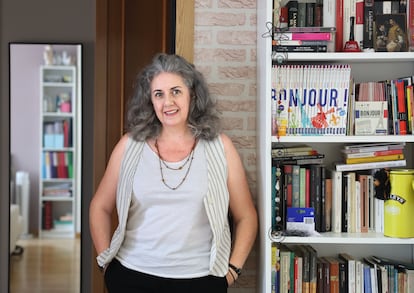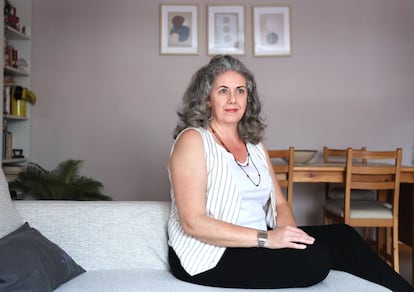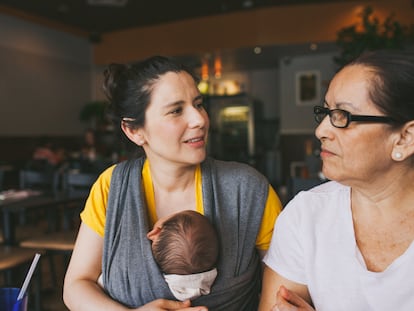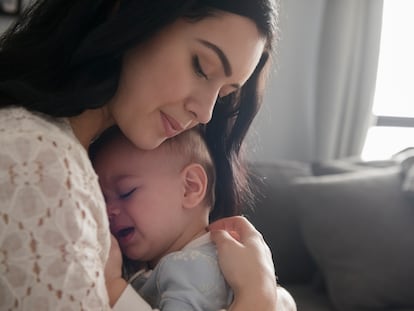Kinkeeping, the exhausting invisible work that keeps the family together
Different studies have researched how this emotional, overlooked and eminently feminine job plays a crucial role in maintaining familial ties

Until recently, Ana Torrado, a 52-year-old administrator from Madrid, had never heard of kinkeeping. “But now that you mention it, I will tell you that I totally agree with that idea,” she says in an exchange of messages. Kinkeeping is the invisible task of keeping the family together. It is based on communication and organization, on creating and maintaining family traditions. Calling to ask how things are and if a relative is coming home for lunch on Sunday. It is the glue that keeps the family together. This sociological term came into use in the mid-20th century, but has begun to gain traction in recent years. Many women like Torrado are unaware of the word, but almost all of them can relate to it.
“Running a house is not just about shopping, cleaning and cooking,” explains Torrado, who has been married for 26 years, has two children, ages 21 and 16, and an 82-year-old mother. “It means putting the washing machines on almost every day because my children play in a sports team. It means keeping an eye on the calendar in case you have a medical appointment. It means that if a close relative has a birthday, you have to remind your children and husband to wish them happy birthday, and then buy the gift on behalf of everyone. If we organize a party, in a large family like mine, it means preparing the food taking into account the people who are allergic to eggs, the vegetarians and those who drink non-alcoholic beer... And if I let my husband organize it, there is no way he’d keep in mind so many details.” Kinkeeping is, as Torrado defines it, a long-distance race. And what’s most frustrating is that when you reach the goal, there is not always someone there to congratulate you.
Mentions of kinkeepers began to increase in sociological literature in the 1980s and 1990s. “But it was common to consider these activities less worthy of empirical research than other topics with greater economic impact, such as the effects of maternal employment on child development,” explains Laura Brown, a sociologist at New York University and one of the world’s leading experts in kinkeeping. That is why there are hardly any quality longitudinal studies on the subject. She has been filling this knowledge gap for more than a decade. In a 2010 study, Brown analyzed the kinkeeping patterns of 227 families. The study confirmed that kinkeeping was a predominantly female phenomenon and examined its consequences.
The children of a heterosexual couple tend to be more closely linked to their maternal grandparents than to their paternal grandparents, up to 22 points out of 100 according to the study. Maternal preference held even if paternal grandparents lived closer. This phenomenon — matrilineal advantage — has been backed in numerous studies. Women give greater importance to the family and actively work to keep it together, which is why children tend to always be closer to their maternal family. It is not known whether this difference has a biological or cultural origin, but it is a widely studied phenomenon.
These effects are much more evident when a traumatic event occurs in the nuclear family. Brown explains: “My research colleague Sara DeRycke and I discovered that when the middle generation divorced, there was an increase in kinkeeping behaviors by maternal grandparents, and a decrease in kinkeeping (and contact) by paternal grandparents.” This was especially evident in the years immediately following divorce and was more pronounced a few years ago, because women tended to retain custody and fathers tended to retain visitation. There is no scientific literature on the subject, but it is conceivable that with the normalization of shared custody, these effects have been diluted.

Kinkeeping began to be studied more than half a century ago. The situation of women has changed a lot in this time, with women’s incorporation into the labor market and growing social awareness of gender inequalities. But despite the changes, this phenomenon has remained eminently feminine. Brown points to possible causes: “There is probably a biological component, but it could also go back to early human hunter/gatherer societies, where men hunted, while women stayed in villages and literally kept the home fires burning.”
In addition, she explains, environmental factors begin to manifest itself from infancy. Girls are educated to be caregivers from a young age, with dolls and toy homes. “We teach our daughters and granddaughters to take care of the family, but we do not train our sons or grandsons to be parents or caregivers,” says Brown. “In societies where there is a strong demarcation between gender roles, the effects are even more pronounced, as boys are ridiculed for being sensitive or caring, because these virtues are conceived of as unmanly.” The differences start to form in childhood and the results are evident upon reaching adulthood.
A 2017 study from the University of Nebraska asked volunteers to identify with the role of kinkeeper: 91% of the people chosen were women. On the Kinkeeper app (which helps organize family life), the ratio of women to men is 3:1, according to internal data provided by Jill Micha, the company’s founder. “I think women have carried that weight for generations because we believe that a lot of things matter,” Micha reflects. “Sometimes they really matter, and sometimes they don’t matter as much, but we’ve made caring for the needs of others a priority, thus making it a cultural and multigenerational norm. That makes women feel both valuable and depleted.” The data seem to prove her right. Sixty-eight percent of mothers say they have parental burnout, compared to 48% of men.
Playing the role of kinkeeper involves putting in time and emotion, and not everyone is willing to make that commitment. But it brings a clear and collective benefit. Research suggests that the quality of family ties has a huge impact on health, happiness, and even longevity. “The inequality in this is that it is a benefit enjoyed by many and is produced only by women,” explains Belén Alfonso, a psychologist specializing in gender studies.
“I don’t know to what extent families are solid entities that remain united over time or if this union depends on specific people who exercise this role in a more or less chosen or imposed way,” reflects Alfonso. “But it is clear that keeping relationships healthy requires emotional work.” This work, the psychologist points out, has been overlooked for years. That is why it is important to find a name for it and study its impact, says Alfonso. “The concept of kinkeeper sheds light on the existence of this work and the fact that it is carried out, mostly, by the women of the family. And this is a great expression of inequality,” she explains.
The concept of the traditional nuclear family — understood as a heterosexual couple with shared biological children — has evolved and become less dominant, adds Alfonso. “For a long time, in the social sciences, when we talked about family, we were referring to the multiple forms that a family system can take, in which affection, traditions and socialization roles are carried out.” But in all these diverse families there is one thing in common: the figure of the kinkeeper is essential to keep them together.
In recent years, there has been a lot of talk about the family we choose. But in modern societies, maintaining the link with the biological family beyond the age of 18 is also a choice. Extended families are chosen to the extent that these ties can be broken or strengthened. With increasing diversity in age structure, composition and forms within families, it is more important than ever to explore the glue that binds a group of people together across time, distance and divorce. American sociologists call it kinkeeping, but in the end it is as simple and concrete as when your mother calls you to ask how you are doing and asks you to come home for Sunday lunch.
Sign up for our weekly newsletter to get more English-language news coverage from EL PAÍS USA Edition
Tu suscripción se está usando en otro dispositivo
¿Quieres añadir otro usuario a tu suscripción?
Si continúas leyendo en este dispositivo, no se podrá leer en el otro.
FlechaTu suscripción se está usando en otro dispositivo y solo puedes acceder a EL PAÍS desde un dispositivo a la vez.
Si quieres compartir tu cuenta, cambia tu suscripción a la modalidad Premium, así podrás añadir otro usuario. Cada uno accederá con su propia cuenta de email, lo que os permitirá personalizar vuestra experiencia en EL PAÍS.
¿Tienes una suscripción de empresa? Accede aquí para contratar más cuentas.
En el caso de no saber quién está usando tu cuenta, te recomendamos cambiar tu contraseña aquí.
Si decides continuar compartiendo tu cuenta, este mensaje se mostrará en tu dispositivo y en el de la otra persona que está usando tu cuenta de forma indefinida, afectando a tu experiencia de lectura. Puedes consultar aquí los términos y condiciones de la suscripción digital.
More information
Últimas noticias
Welcome to the post-religion era: The idea of Christianity as the absolute truth has become obsolete
‘I thought you would like it’: The risky sexual practice popularized by TV shows and TikTok
The digitalization of tourism: ‘They promise experiences and gave us the worst possible one’
Mexican peso defies uncertainty with forecasts of a new period of stability in 2026
Most viewed
- Sinaloa Cartel war is taking its toll on Los Chapitos
- Oona Chaplin: ‘I told James Cameron that I was living in a treehouse and starting a permaculture project with a friend’
- Reinhard Genzel, Nobel laureate in physics: ‘One-minute videos will never give you the truth’
- Why the price of coffee has skyrocketed: from Brazilian plantations to specialty coffee houses
- Silver prices are going crazy: This is what’s fueling the rally











































